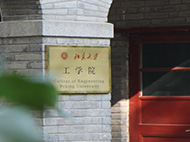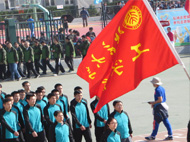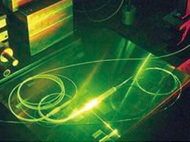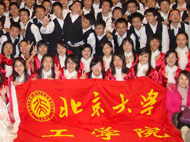主 办:力学与工程科学系
报告人:蒋炎尧 教授(美国内华达大学里诺分校机械工程系)
时 间:8月9日 周四下午4点-5点
地 点:澳门太阳娱乐网站官网力学楼434室
主持人:易新 研究员
报告人:
蒋炎尧教授长期从事疲劳力学和塑性力学方面的研究,在循环塑性、疲劳与断裂、滚动接触分析、材料服役的耐久性等诸多方向均做出非常出色的工作。
报告内容简介:
Magnesium (Mg) is the fourth most common element on the Earth and is a green material due to its lightweight, nontoxicity, and recyclability. With two-thirds the density of aluminum, Mg alloys are the lightest metals that can be used for load-bearing structures. A wrought Mg alloy, either rolled or extruded, differs from a conventional metal in two major aspects: deformation twins and material anisotropy. The current presentation will cover characteristic cyclic deformation and the associated unique fatigue behavior observed on several typical wrought Mg alloys (AZ31B, AZ61A, AZ90, ZK60) under strain- and stress-controlled uniaxial, torsional, and combined axial-torsion loading. For a given loading path under the fully reversed strain-controlled condition, a distinguishable kink point in the strain-life fatigue curve demarcates the involvement of twinning-detwinning deformation. The influence of twinning is significant on fatigue behavior of a Mg alloy when the loading amplitude exceeds the kink point. Twinning-detwinning in a Mg alloy is often reflected in an asymmetric sigmoidal-shaped stress-strain hysteresis loop during cyclic loading. As a result, there is a tensile or compressive mean stress, dependent on the material orientation, under fully reserved strain-controlled tension-compression loading. Cyclic twinning-detwinning deformation leads to significant cyclic hardening particularly under stress-controlled loading. Under pure shear loading, the stress-strain hysteresis loops are symmetric although twinning-detwinning occurs at high shear strain amplitudes. When a Mg alloy is subjected to combined axial-torsion loading, asymmetric shear stress-shear strain hysteresis loops are observed due to alternative occurrence of twinning and detwinning with reversed axial stress. No nonproportional hardening is observed on the Mg alloys but the fatigue life is reduced significantly under nonproportional loading as compared to that under proportional loading with the same equivalent strain magnitude. Material orientation- and amplitude-dependent cyclic deformation and fatigue behavior of Mg alloys will be presented together with an assessment of the existing multiaxial fatigue criteria for the application to the Mg alloys.








